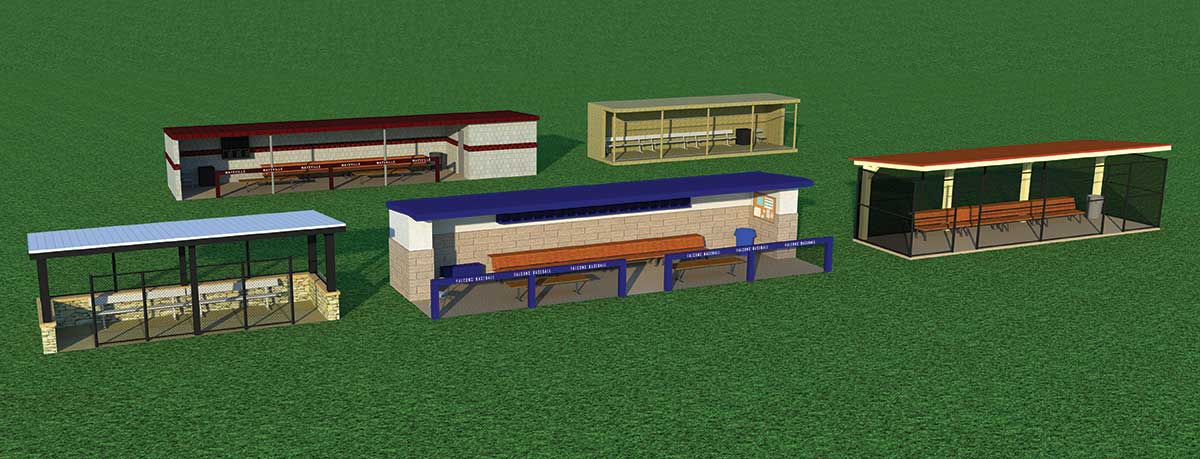Baseball, often referred to as America’s pastime, is a sport steeped in tradition and rich history. Within the confines of the baseball field, there is a special area that holds great significance for players and fans alike – the dugout. In this article, we will delve into the meaning, history, design, and functions of the baseball dugout. Get ready to discover the heart of the game and gain a deeper appreciation for this iconic part of the ballpark.
The Evolution of the Dugout

Understanding the Origins
The term “dugout” in baseball refers to the area where players and coaches sit when they are not on the field. It is located between home plate and either the first or third base, in foul territory.
But why is it called a “dugout”?
The name is derived from the fact that these areas were initially dug into the ground, creating a slightly lower level than the playing field. This design allowed spectators seated behind the dugouts to have an unobstructed view of the game, particularly the home plate area.
From Benches to Covered Structures
In the early days of professional baseball, the dugouts were simple benches or chairs positioned above ground level. However, as the sport grew in popularity and stadiums became more sophisticated, the need for better shelter and protection for players became evident. Thus, the dugouts evolved into covered structures, providing players with a safe and comfortable space to rest, strategize, and store their equipment.
Design and Structure of the Dugout

Tailored for Functionality and Comfort
Dugouts in Major League Baseball (MLB) are carefully designed to accommodate the needs of the players and coaching staff. While the specific features may vary from stadium to stadium, they share common elements. Typically, a professional dugout is approximately 60 feet long, 10 feet wide, and 9-10 feet high. The structure is constructed using a combination of wood, metal, and composite materials.
Seating and Equipment Storage
One essential component of a dugout is the bench, where players and coaches sit during the game. The bench provides a place to rest, observe the game, and interact with teammates and coaches. Additionally, the dugout serves as a storage area for players’ equipment, including batting helmets, gloves, bats, and catcher’s gear. To maintain cleanliness and hygiene, modern dugouts often feature rubber flooring that can be easily disinfected.
The Functions of the Dugout
Strategic Hub and Communication Center
The dugout is not merely a place for players to wait their turn on the field. It serves as the strategic hub and communication center for the team. From the dugout, managers and coaches coordinate offensive and defensive strategies, sending signals to the first and third base coaches who then relay the information to the players on the field. This seamless communication allows the team to adjust their approach based on the manager’s instructions.
Shelter and Protection
In addition to its strategic role, the dugout offers players and coaches protection from foul balls, adverse weather conditions, and even unruly fans. The covered structure shields them from potential injuries caused by line drives or stray balls.
Moreover, during inclement weather, such as thunderstorms or extreme heat, the dugout provides a safe haven for the team, allowing the game to continue once the conditions improve.
The Role of the Dugout in Gameplay

Rules and Limitations
While the dugout serves as a crucial component of the game, there are specific rules and limitations regarding its usage. According to MLB rule 3.17, only players, substitutes, coaches, athletic trainers, and batboys or batgirls are allowed inside the dugout during a game.
Players on the disabled list can also be present in the dugout but are prohibited from entering the field of play. Any players or coaches who have been ejected from the game must leave the dugout area.
In-Game Interactions and Support
During the game, the dugout becomes a hive of activity. Players not currently on the field closely follow the action, analyzing the opposing pitcher’s strategy and discussing potential adjustments with their teammates and coaches. The dugout is also a place of support and camaraderie, with players encouraging and motivating each other.
Additionally, the dugout provides immediate access to medical staff and equipment, ensuring prompt attention to any injuries or physical issues that may arise during the game.
Frequently Asked Questions
Q: Why is it called a dugout in baseball?
A: The term “dugout” is derived from the fact that these areas were initially dug into the ground to provide a slightly lower level than the playing field.
Q: Who is allowed in the dugout?
A: According to MLB rules, only players, substitutes, coaches, athletic trainers, and batboys or batgirls are permitted in the dugout during a game.
Q: How many seats are in the dugout?
A: Dugouts are designed to accommodate up to 30 individuals, including players, coaches, and support staff.
Q: Do baseball players eat in the dugout?
A: Yes, players often consume snacks such as sunflower seeds, gum, or candy while in the dugout.
Q: What happens when the ball goes into the dugout?
A: If a live ball enters the dugout, it is immediately ruled a dead ball, and the umpire determines the appropriate action based on the circumstances.
Conclusion
The dugout in baseball is far more than a sheltered sideline. It holds immense importance as the strategic hub, communication center, and sanctuary for players during a game. From humble beginnings as simple benches to the modern covered structures we see today, the dugout has evolved to meet the needs of the players and enhance their overall experience on the field.
So, the next time you watch a baseball game, take a moment to appreciate the significance of the dugout – the heart and soul of America’s favorite pastime.








